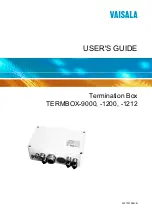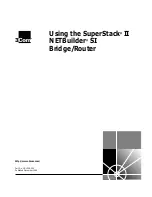
PRODUCT MANUAL IPR100
EAE KNX IP ROUTER
IPR100 R1
©
EAE Technology
www.eaetechnology.com
Page 3 / 24
1. General Features
EAE KNX IP Routers are similar to TP line couplers, except that they use Ethernet for the main line.
However, it is also possible to directly integrate KNX end devices via IP, making Ethernet respectively
IP (Internet Protocol) a KNX medium.
EAE KNX IP Router is a tunnelling and routing device. It can be used as line- or backbone coupler and
provides a data connection between the upper KNXnet/IP line (main line or backbone) and the lower
TP KNX bus line (sub line). It also provides with the tunnelling protocol a connection point for ETS to
enable commissioning and monitoring.
IPR100 can also connect two separate installations/systems
Following highlights are characterising EAE KNX IP Router:
- Support of long messages up to 250 byte. In combination with EAE IPR100 line coupler and USB
i
nterface “UIM
-
KNX 42” long messages are made possible (e.g. energy metering applications).
- It provides the tunnelling protocol, a connection point for ETS to enable commissioning and
monitoring (4 parallel connections are possible).
- IPR100 can be used for replacing a line coupler or an area coupler. The best advantage of this
change is using LAN as a fast medium for exchange of telegrams between the lines and/or areas.
- sending IAK on own message: sending of immediate acknowledged (IACK) on a frame that is sent by
the EAE KNX device itself.
When the IPR100 sends a message and there is nobody to acknowledge this message, the it would
repeat the last message up to 3 times. In case there is an IACK, there will be no repetition. The failure
mechanism in case of a negative IACK or BUSY is still maintained.
- switching off the filter table with a button on the device without reconfiguring the device with ETS,
necessary for fast diagnostic on site. It can temporarily disable filtering of messages by pressing a
button. This eases commissioning and debugging of the system. The temporary access to other lines
is possible without download from ETS.
- Automatically switching on filter tables and filtering of device oriented tables after time out. Time
out is ETS configurable. No forgetting of reactivating the tables anymore.
- Routing of all physically addressed messages (no filtering of device oriented messages), no matter
of own physical address, on press of a button on the device without reconfiguring the device with
ETS.
- High internal amount of communication buffers capable smoothing peeks in communication load.
- Detailed possibility for diagnosis by displaying all operational states with 6 duo LEDs. (Bus OK (each
line), traffic (each line), errors/faulty communication NACK, BUSY on the bus (each line), state of the
filter table …)
- UPnP available to discover the device in IP network. The ETS can discover the device as
communication interface through Eibnet/IP Search Request.
- WEB interface: currently providing device settings and an opportunity to switch on to program
mode.




































